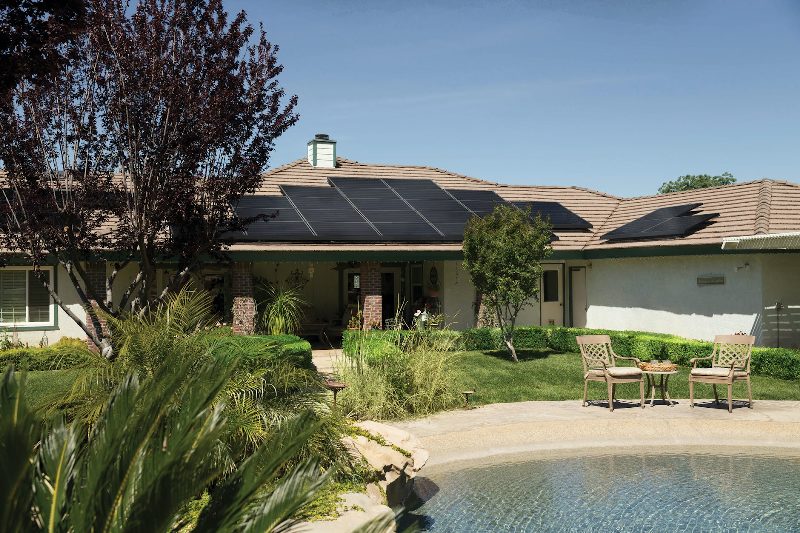The global energy demand is on the rise. As a result, the world’s reliance on fossil fuels like coal and natural gas will only continue to grow in tandem with our need for electricity. The burning of fossil fuels has an enormous impact on the environment – from air pollution to carbon emissions linked to climate change. If you want to lower your electric bills while helping out the environment, then there are some easy ways to do so!
Switch To LED Light Bulbs
Upgrading your light bulbs to LED light bulbs can help lower your electricity bill and be more environmentally friendly. Since LEDs use around 80% less energy than incandescent lighting, you will have a much easier time lowering your electric bill by switching to these types of lights. These bulbs are long-lasting and will cut your electricity costs by a noticeable amount.
Today, LED bulbs come in different colors and brightness. Therefore, you will always find a color that suits your taste, and you will never again have to worry about changing a light bulb.
Use Solar Powers
In Washington, many home buyers are considering homes with solar panels installed on the roof. Solar panels are a great way to reduce your household electric bill and be more environmentally friendly. Solar power not only helps you save money right away but over time as well because of electricity rates going up.
Thanks to advancements in tech, today, the tapping of solar energy has improved. Not long ago, Tesla introduced solar roof tiles that can be installed on any home. If you have been looking to replace your roof, this is the way to go.
Install A Smart Thermostat
Your home’s HVAC unit is responsible for about 40% of your home’s energy use, so it’s essential to make sure you’re getting the most out of this system. One way to do that is by installing a smart thermostat that will allow you to turn off the heat or AC when no one is at home and monitor its performance in real-time from wherever you are.
The installation of a smart thermostat will also ensure that your home’s temperature is always at an optimum level, which means less time and energy wasted on making adjustments. You can even set this device to activate based on specific triggers, so you don’t have to worry about forgetting to turn off your system when it’s not being used.
Turn Off And Unplug Electronics When Not In Use

When leaving the house for a few hours, it’s easy to forget that you left the TV or computer on. You can’t remember what you did with your phone before leaving, and there is no time to find out now!
The solution: turn off your electronics when not in use. This will save energy and money by reducing how often they need to be plugged in. If devices like televisions aren’t turned off, people might leave them running for days- even weeks at a time without realizing it! Turning things off also helps prevent fires, saves electricity, and preserves natural resources (like coal).
Do Away With Old Appliances
That old TV set or refrigerator that you’re holding on to may not be worth it. Not only are they a drain on your wallet, but also the environment and can use up all of its resources like electricity or water. If you want to reduce your monthly electric bill while being more environmentally friendly, then start getting rid of those old appliances that take up space in one corner of your home.
Modern electronics are designed to be more energy-efficient than their predecessors. For example, if you have an old TV set or fridge that uses 400 kilowatts of power each month, a new model will use around 100 to 150 kW per month. That’s how much less your central air conditioner and refrigerator are going to work for you when they’re not powering up the older models that still suck plenty of juice from your electric bill.
While getting rid of those outdated appliances may cost some money upfront, in the end, it can save you a lot on electricity costs as well as make sure those items don’t take any longer time to break down because they’ve been overcrowded for too long with other goods inside them already.
Go For Energy-Efficient Windows And Doors
Your windows and doors can account for up to 50% of your home’s heat loss and 20-30% of its cooling costs. When buying new windows, be sure to opt for the most energy-efficient models on the market.
Insulating is also a good idea if you have older vinyl weatherstripping around those same areas because it can tear easily and allow more heat or cold to enter your home.
Choose The Best Electricity Provider And Plan For You
When shopping for an energy plan for your home, it’s important to know what type of energy you need and the terms of the plan.
The common residential energy plans include variable-rate and fixed-rate rate plans. Fixed-rate energy plans allow households to get power from an energy provider’s electricity and natural gas plans at a price that fits their budget. The energy rate is locked in for the contract term length in fixed-rate plans. On the other hand, utility companies usually provide variable-rate plans, wherein the energy rates can go up or down. These changes depend on the demand, weather, and the state of the energy market.
To better choose the best electricity provider for you, create a shortlist of energy companies that service your area. Check the rates they’re offering to determine the right provider for you. Moreover, determine whether or not you reside in a deregulated state. For instance, electricity is deregulated in Texas. Consumers can save on their utility bills if they shop a list of Texas electricity providers.
In addition to knowing more about the electricity providers in your area and if you’re in a deregulated state, don’t miss checking your energy needs. Several things can affect your energy bill, such as the following:
- Energy Units or the amount of electricity you use
- Delivery or the electricity provider’s charge of moving energy (such as via power lines, meters, and gas pipelines)
- Transmission cost of bulk energy transfer from a power plant to an electrical substation
- Capacity or the cost of ensuring that there’s always sufficient electricity supply at peak times
- Ancillary services (such as regulation and voltage control)
Whether you want to save money or help the environment, there are some easy ways to do so. We hope these suggestions have given you insights into how you can save money while helping the environment.






